I Bet You Didn’t Realize Them Earlier…
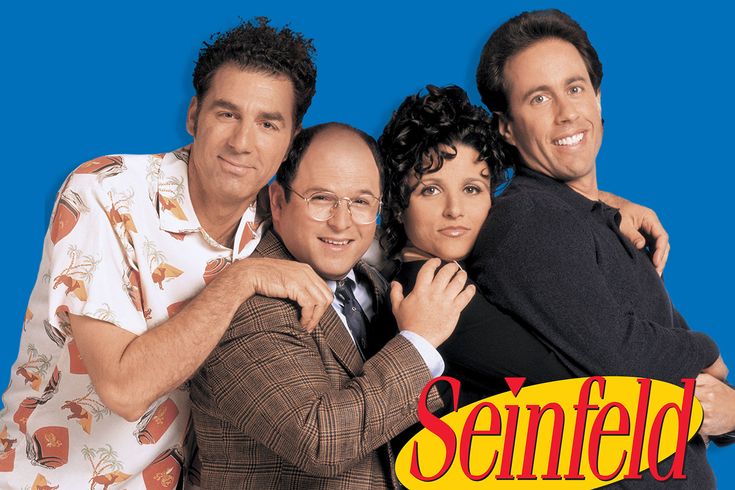
Stepping into Jerry’s apartment or grabbing a bite at Monk’s, you might think the scenery is just a casual backdrop, but look closer. The subtle, sometimes absurd, objects scattered throughout the world of Seinfeld often carry more weight than a whole episode’s dialogue, telling their own tiny, hilarious stories about the characters and the mundane absurdities of life.
1. The Puffy Shirt
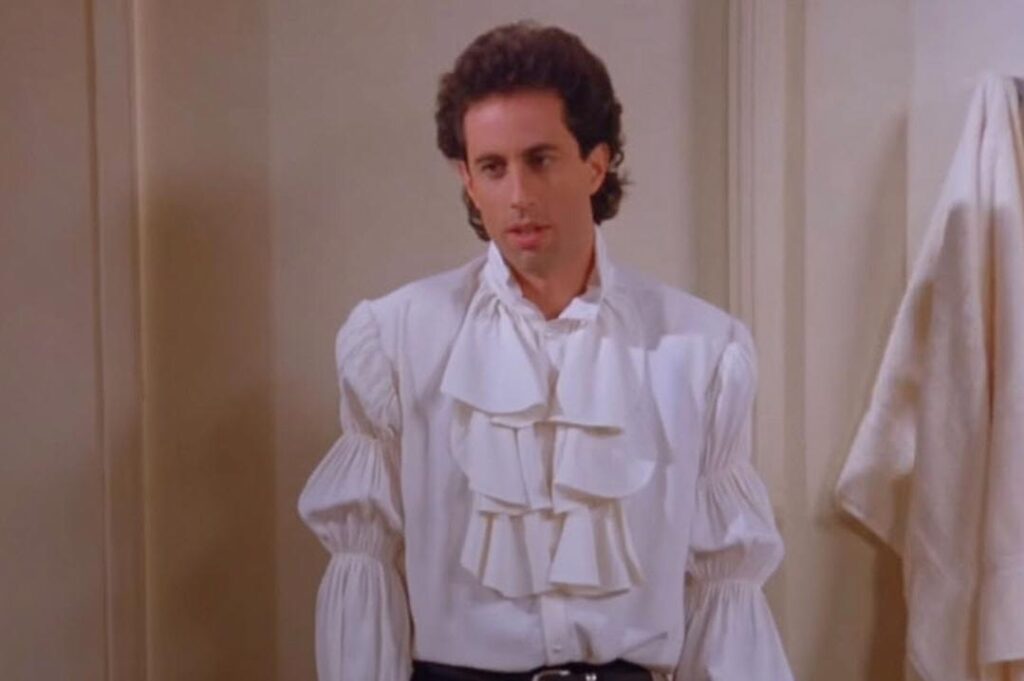
This infamous cotton-linen garment, with its billowing sleeves and frilly front, became a symbol of Jerry’s fashion-related social missteps. Worn on the Today Show after Jerry mistakenly agreed to wear it, unable to hear the details of its “pirate” design, the shirt represents the sheer pressure of social obligation and the humiliation of a fashion disaster. Its visual absurdity contrasts sharply with Jerry’s minimalist style and stand-up comedian persona. When he finally denounces the shirt on national TV, it triggers a classic Seinfeld chain reaction of disastrous consequences, a testament to how one ridiculous prop can unravel multiple lives. Eventually, the shirt was donated to the Smithsonian’s National Museum of American History, securing its place in pop culture history.
2. The Superman Figurine
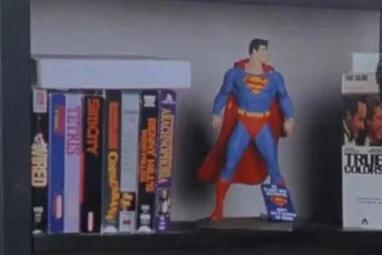
A small Superman figurine, often visible on Jerry’s bookshelf near his television, is one of the most consistent pieces of set dressing in his apartment. This seemingly minor detail is a direct nod to Jerry Seinfeld’s real-life adoration for the superhero, a theme that occasionally surfaces in his stand-up routines. On the show, the figurine subtly reinforces Jerry’s worldview, reflecting a value system rooted in classic notions of strength, justice, and childhood nostalgia, often juxtaposed with the petty, neurotic struggles of the adult characters. Its enduring presence is a gentle “Easter egg” for dedicated fans, a quiet symbol of the comic’s inner child and his enduring quest for truth and order in a chaotic world.
3. The Festivus Pole
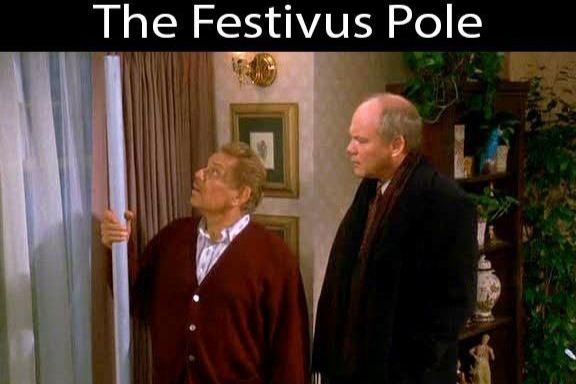
Introduced by Frank Costanza as an alternative to commercialized holiday traditions, the bare aluminum Festivus Pole stands as a towering monument to irreverence. Frank’s rationale was simple: he “found tinsel distracting,” preferring a simple, unadorned pole. This prop instantly establishes the bizarre nature of the Costanza family’s traditions, setting the stage for the equally strange activities of the “Airing of Grievances” and the “Feats of Strength.” Its plain, anti-celebratory design perfectly encapsulates the show’s ability to extract deep, lasting humor from the rejection of social norms, creating a holiday icon that is, ironically, entirely about being non-commercial and effortlessly strange.
4. Jerry’s Cereal Boxes
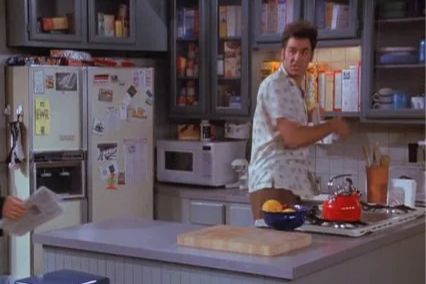
Look closely above Jerry’s kitchen counter or refrigerator and you’ll consistently see a tidy, almost excessive, collection of various cereal boxes. This prop serves as a perfect visual shorthand for Jerry’s perpetual state of bachelorhood and his specific, childlike tastes. The sheer quantity of boxes suggests an almost obsessive need for variety and control over his routine, reflecting his well-documented neuroses about food. The cereal boxes are more than just set dressing; they underscore his character as someone whose biggest decisions often revolve around mundane choices, grounding his otherwise absurd life in relatable, everyday details.
5. Elaine’s Jujyfruit Box
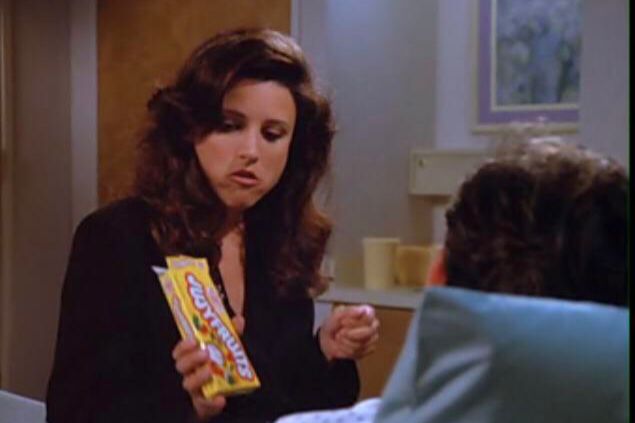
In one of her most memorable moments of poor timing, Elaine is seen clutching a box of Jujyfruits candy while in the hospital waiting room, just as her boyfriend, a surgical patient, is wheeled out. The prop becomes an indicator of her priorities, a momentary impulse for comfort food overriding social etiquette and serious concern. This focus on a minor craving during a crisis underscores Elaine’s, and the show’s, willingness to explore the inherently selfish, often inappropriate, motivations that govern everyday human behavior. The Jujyfruits box, simple as it is, perfectly highlights the absurdity of trying to maintain normalcy and address petty desires even amidst high-stakes emotional situations.
6. George’s Frogger Arcade Machine
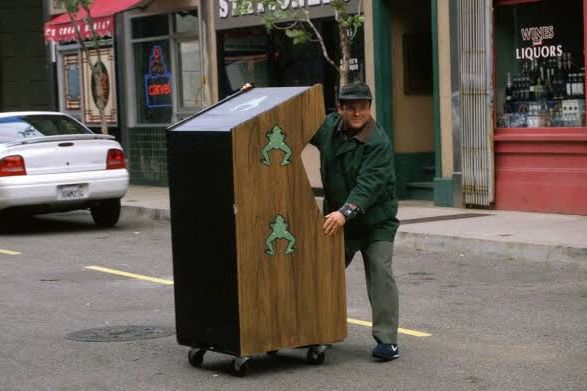
The Frogger arcade machine is the physical manifestation of George Costanza’s desperate need to immortalize a fleeting moment of glory, his high score of 860,630 under the initials “GLC” from his teenage years. The prop is the centerpiece of a meticulously planned, disastrous caper, as George attempts to move the heavy machine across a busy street while keeping it plugged into a car battery so the score won’t be erased from its volatile memory. This bizarre attempt to preserve a trivial victory highlights George’s profound fear of irrelevance, culminating in the machine’s dramatic destruction, a final, crushing metaphor for George’s inability to ever truly escape his past failures.
7. Newman’s Antiquated Exercise Machine
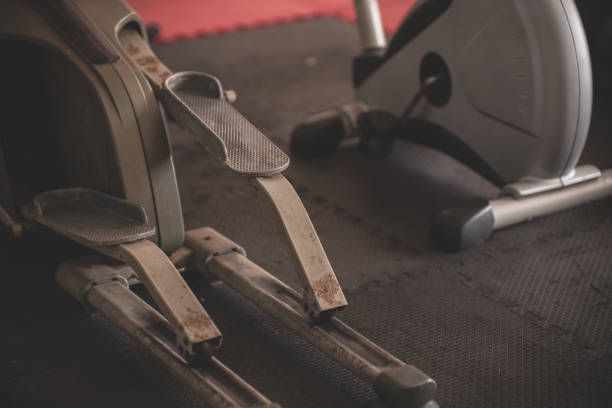
In Newman’s famously cluttered apartment, a vintage, belt-driven vibrating weight loss machine is often visible in the background. This absurd, mid-century health gadget perfectly illustrates the lazy, effort-averse personality of the mailman. These old machines were marketed on the notion that a vibrating belt could magically melt away fat without any actual exercise. That this is the only kind of exercise equipment Newman owns speaks volumes about his character’s chronic desire for maximum results with minimal effort, a perfect visual detail for a character whose grand schemes are almost always doomed by his lack of ambition.
8. The Urban Sombrero
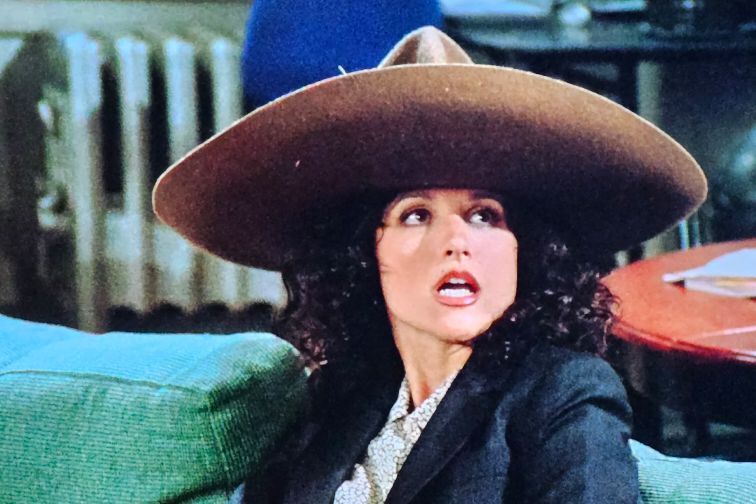
Elaine’s attempt to create a unique piece of fashion while working as editor-in-chief of the J. Peterman catalog results in the infamous Urban Sombrero. This large, hybrid hat, a cross between a cowboy hat and a wide-brimmed city accessory, is a prop that quickly spirals into a symbol of her ambition and professional misjudgment. Its gaudy, impractical design is a direct visual commentary on the often-absurd nature of high-end, aspirational fashion. When the item proves to be a spectacular failure and a source of public ridicule, the sombrero becomes a physical representation of Elaine’s struggle to find success in the corporate world without sacrificing her quirky, idiosyncratic taste.
9. George’s Timberland Coat
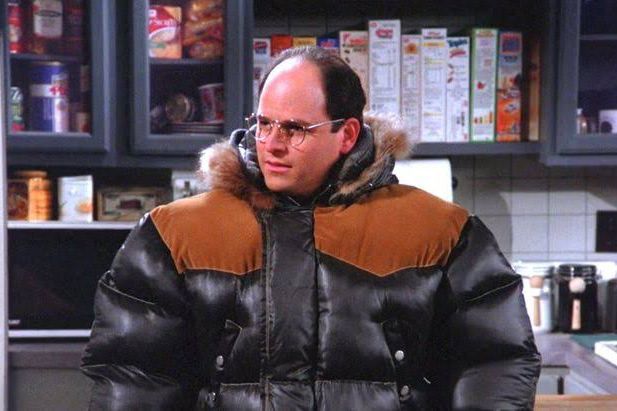
In the episode “The Dinner Party,” George purchases an expensive, oversized, all-weather Timberland coat as a status symbol. The prop immediately becomes a source of stress and conflict due to its size and cost. George’s exaggerated movements in the bulky jacket, and his frantic efforts to protect it from damage, physically convey his insecurity and his attempt to “buy” his way into sophistication. The coat is a classic Costanza-esque prop, an item of material wealth that only creates more anxiety and ultimately fails to deliver the confidence or respect he craves, proving that you can’t simply purchase a new personality.
10. The Marble Rye
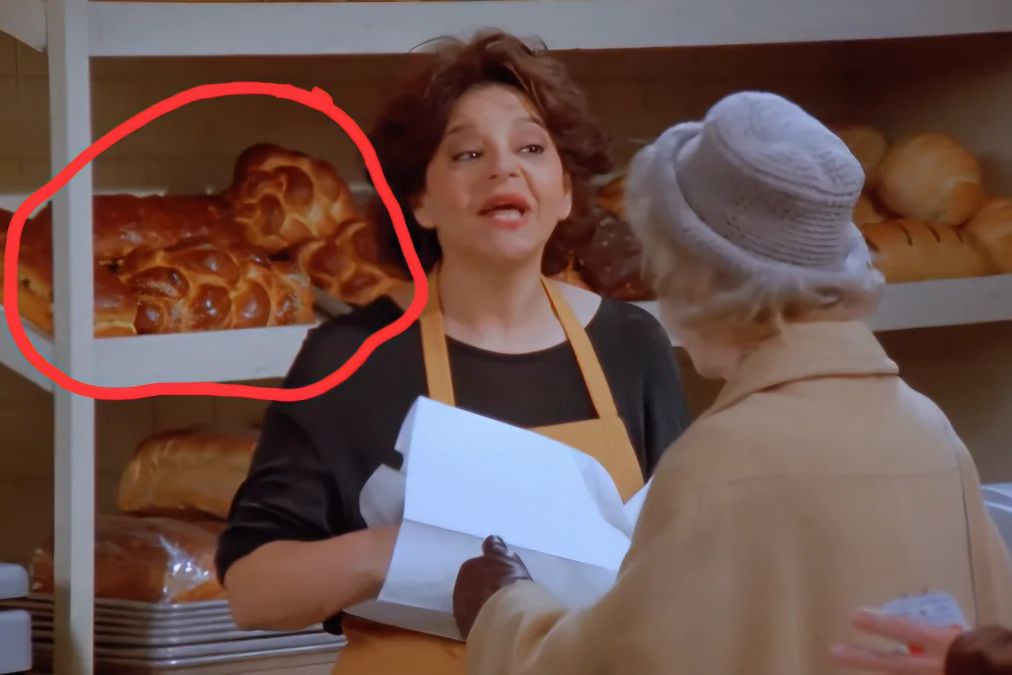
The marble rye bread, particularly the one George’s parents try to re-gift at a party, becomes an agent of chaos in its own right. After George fails to smoothly acquire the bread, Jerry has to resort to stealing it from the older woman’s hands with a fishing rod from a window across the street. This prop, a simple loaf of bread, triggers one of the show’s most elaborate and memorable capers, demonstrating how far the characters will go, and the lengths to which they will employ intricate schemes, over the most trivial of matters. The marble rye transforms from a common bakery item into a priceless object of desire and a catalyst for criminal, albeit hilarious, action.
11. The Junior Mint
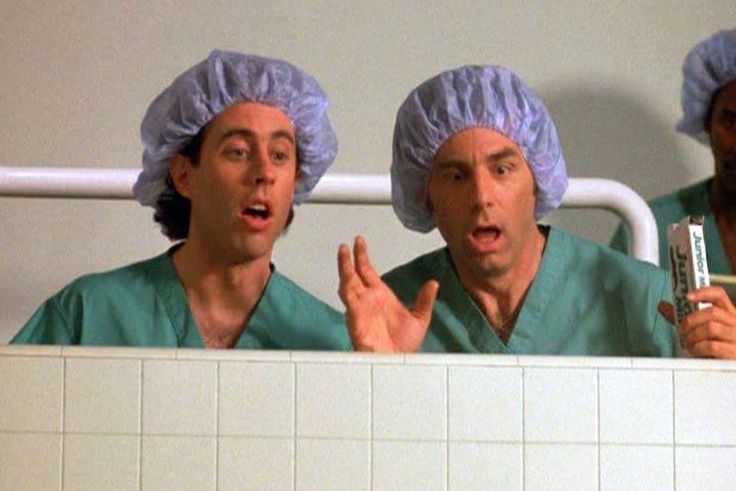
In “The Junior Mint,” a small Junior Mint candy accidentally falls from the viewing gallery and into the open surgical cavity of Elaine’s artist boyfriend, Roy. The prop is an absurd, brightly colored contrast to the sterile, high-stakes environment of an operating room. This single piece of candy becomes the ultimate MacGuffin, its ambiguous effect on Roy’s recovery (he improves, suggesting the mint was beneficial) driving a storyline that satirizes medical uncertainty and the superstitious nature of hope. The Junior Mint, a common movie theater snack, takes on a ridiculous, quasi-miraculous significance, perfectly embodying the show’s embrace of the surreal in the everyday.
12. Kramer’s Coffee Table Book
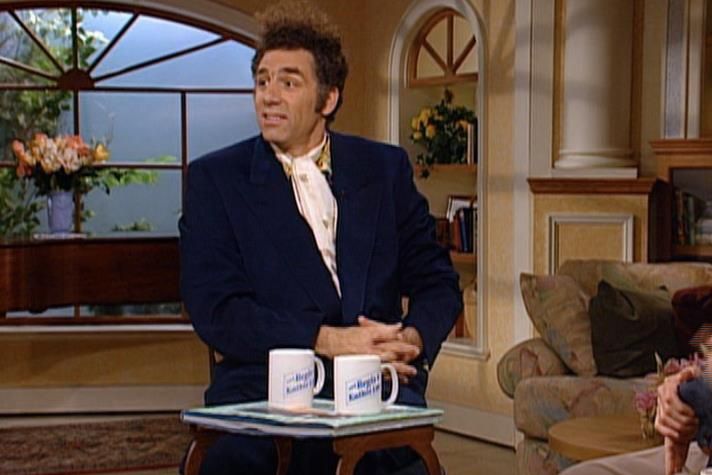
Kramer’s brainchild, a coffee table book about coffee tables that includes fold-out legs to become a coffee table itself, is a prop that literally defines his entrepreneurial spirit. The physical object is the ultimate expression of Kramer’s convoluted and often illogical schemes, an attempt to achieve meta-brilliance by making an object about itself. The book is the focus of his brief, but intense, foray into publishing, which, like most of his ideas, ends in predictable chaos, including being accidentally spilled on by George and later burned. The sheer impracticality of the prop is the joke, showcasing Kramer’s genius for the absurd.
13. The Velour Track Suit
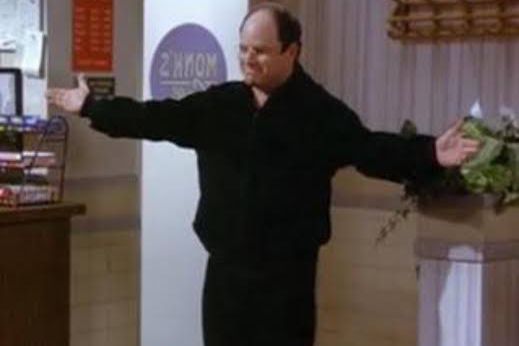
In “The Doorman,” Jerry gives his father, Morty Seinfeld, a new velour track suit. Morty, a connoisseur of fine track suits, becomes instantly obsessed with the garment. This prop serves as a perfect symbol of the older generation’s taste and Morty’s specific, unwavering vanity. The track suit’s velvety texture and fashion status in Florida become crucial to the plot, as Morty tries to assert his authority over the community by wearing it, leading to a confrontation that defines his character’s petty, yet endearing, obsession with status among his peers.
14. The Soup Nazi’s Ladle
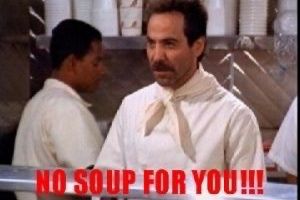
The formidable Soup Nazi’s ladle is perhaps the most defining prop of his character, a symbol of the rigid authority and high standards he maintains in his soup shop. The ladle is not just a serving tool; it’s an extension of his power, used with a ceremonial precision that enforces the strict rules of his establishment. The fear it inspires in customers, who dread the famous line “No soup for you!”, elevates the simple act of buying lunch into a dramatic, high-stakes encounter. The ladle tells the story of how absolute power, even over a bowl of mulligatawny, can corrupt absolutely.
15. The Chinese Restaurant Name
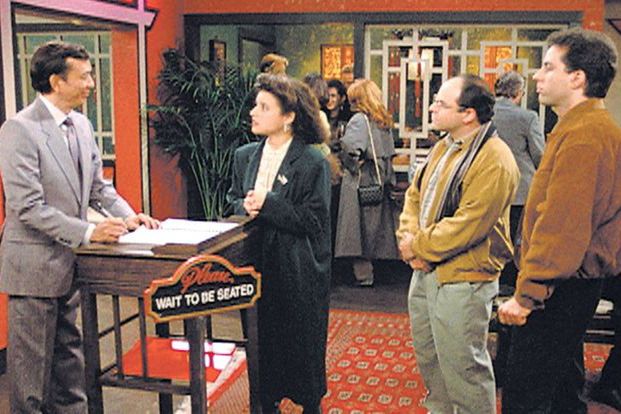
The sign for “The Chinese Restaurant” acts as a symbolic prop. The gang spends the entire episode, “The Chinese Restaurant,” waiting for a table. This sign (since they never get a table) represents the frustrating, futile nature of waiting, bureaucracy, and the trivial annoyances of urban life. The experience, Jerry trying to use a fake reservation, George desperate to use a phone, Elaine’s near starvation, is all centered around the impossibility of accessing a basic need (food), making the restaurant itself an imposing, unyielding prop against which their small, neurotic lives are pitted.
16. George’s Velvet Painting
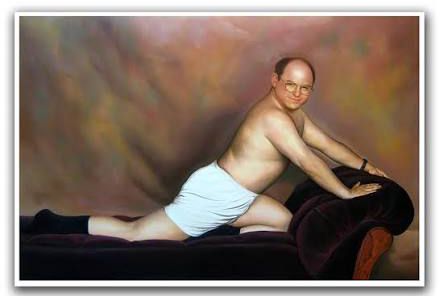
In Seinfeld, the velvet painting of a shirtless man appears in the episode “The Foundation,” hanging in the Costanzas’ home rather than being purchased by George. The kitschy artwork perfectly reflects George’s tendency toward poor judgment and misplaced confidence, as well as the show’s broader humor about taste and self-delusion. His fascination with the tacky painting and his parents’ horrified reaction capture the Costanza family’s dynamic to be loud, uncomfortable, and unintentionally revealing, without needing any deeper Freudian explanation.
17. The Cane From “The Old Man”
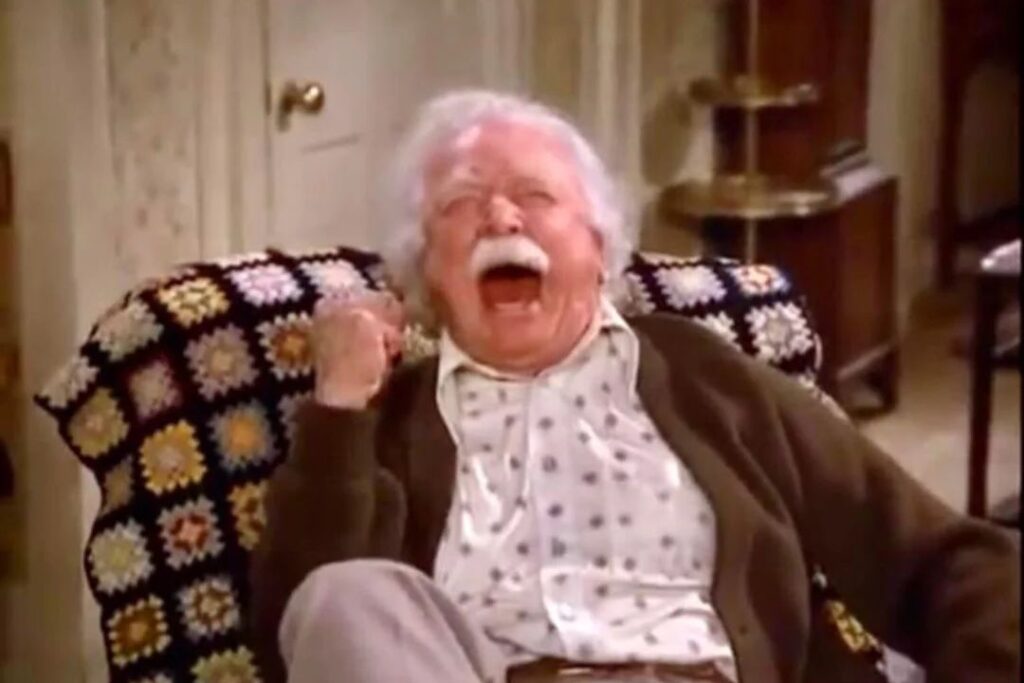
Kramer’s attempts to help an old man, “The Old Man,” backfire when the man, who is actually a doddering scammer, uses his cane to hit Kramer. The cane, which initially appears to be a tool of frailty and vulnerability, is instantly transformed into a weapon. This object reversal is a perfect piece of dark comedy, symbolizing the idea that even the most seemingly harmless people can be malicious. It’s a prop that tells a story about appearance versus reality, a frequent theme in Seinfeld where nothing is ever truly as it seems.
18. Jerry’s Tapes
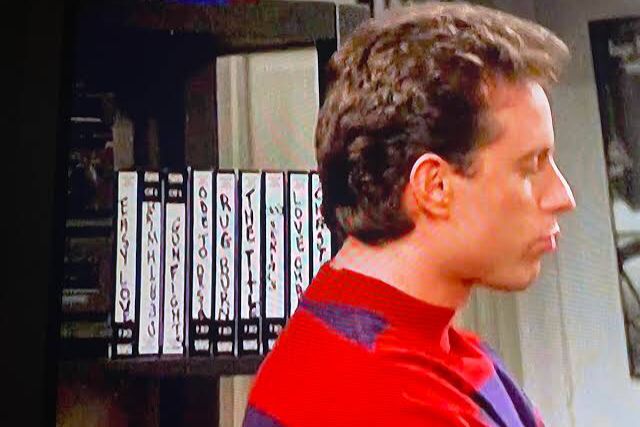
The numerous stacks of VHS tapes lined up near Jerry’s television are a subtle, consistent feature of his apartment. They represent his dedication to pop culture, his love of film, and his commitment to his indoor, observation-based lifestyle. More importantly, they are the source of an ongoing feud with Elaine about which films are actually “good” or “rentable.” These seemingly innocuous tapes underscore the characters’ petty aesthetic differences and their tendency to turn even the most minor cultural opinion into a significant, personal conflict.
The smallest details can often be the loudest storytellers, and in the world of Seinfeld, the props, from a pirate shirt to a block of cement, did more than just fill the screen. They embodied the neuroses, the aspirations, and the utterly human failings of Jerry, George, Elaine, and Kramer, proving that sometimes, a show about nothing is actually about everything, all wrapped up in a perfectly placed Jujyfruit.
This story 18 Strange Props in Seinfeld That Tell Their Own Story If You Look Closely was first published on Daily FETCH


